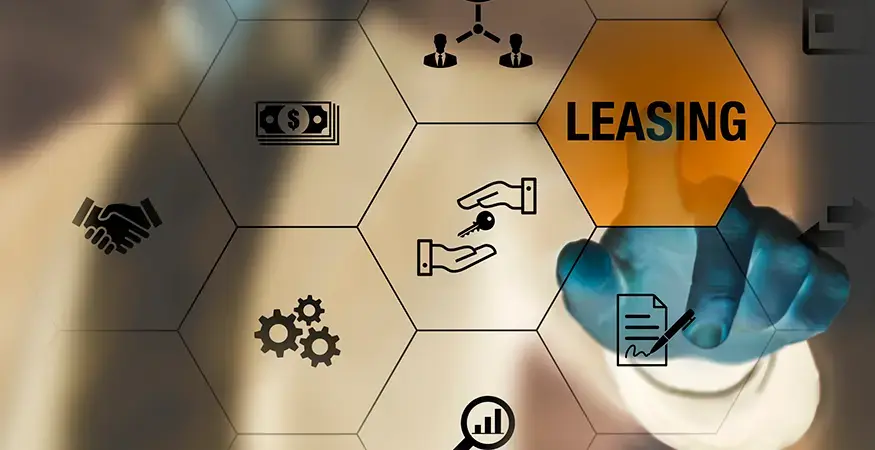Printers and copiers are necessities for most businesses. But investing in office equipment can be a major capital expense, especially for companies that need a fleet of multifunction printers. Even for a small business owner who’s just starting out, purchasing a single machine can take up a sizable chunk of working capital.
A more cost-effective way to address an organization’s office equipment needs is by renting or leasing. For most, the benefits far outweigh purchasing equipment outright. Most notably, it allows businesses to more accurately forecast their budgets, build business credit and even out cash flow each month.
While renting and leasing agreements appear similar, there are differences. So, should you lease vs. rent equipment? We’ll look at what sets each apart and list factors that impact the costs of leasing vs. renting equipment for your office. From there, you can determine which is best for your organization.
Leasing Office Equipment
Overall, the benefits of leasing vs. buying office equipment make it a popular option for most companies. Some office equipment suppliers, including the Gordon Flesch Company, offer in-house financing, meaning they don’t outsource their financing to a third party. This provides more flexible lease terms, better customer service, competitive interest rates, and allows for any maintenance service agreements to be wrapped into one convenient monthly lease payment.
Maintenance, which can be part of a lease or rental situation, typically includes any parts, repairs, labor, toner, travel time and preventative maintenance to reduce printing and copier downtime. In short, you just feed it paper and the service provider takes care of the rest. Ask the right questions when considering different office equipment leasing companies to know what you’re getting and the extent of their services.
A major advantage of leasing equipment is that you have more options once the lease term is up, including the ability to:
- Extend or renew the lease. If you like the machine, you can extend your lease for another year or more at discounted pricing or upgrade to newer equipment under new terms. With technology advancing rapidly, many organizations upgrade to stay on the leading edge.
- Turn in the equipment. The machine is sent back to the provider and your agreement with them is ended. You’ll have no further obligations to the office equipment vendor.
- Take ownership. You’ll have a buy-out option to own the equipment outright for a nominal cost without penalties. If the equipment serves you well and you don’t anticipate needing an upgrade anytime soon, this may be a great option. You can still keep a maintenance agreement copy machine or multifunction device to ensure the machine stays in good condition and operates reliably.
Factors That Determine Monthly Lease Pricing
Several factors go into calculating the cost of leasing equipment with a maintenance agreement. The greatest is the type of machine you choose. A desktop printer costs less than a multifunction printer that can scan, fax, email, collate, staple and more, and each requires different maintenance requirements based on usage. For example, if your organization prints 5,000 copies each month, you’ll be charged accordingly.
Additional factors include how many devices you need; leasing a fleet of printers will have a better price structure per unit. And, the longer your lease term, the lower the monthly bill, with the most common durations being 36, 48 or 60 months.
Overall, leasing costs your company slightly less than renting long term and you’ll build equity. As with any lease, breaking the agreement early may incur a penalty. If it’s near the end of the term, however, you can usually upgrade and have the numbers work out to your advantage.
Renting Office Equipment
Some organizations rent versus lease because they want more flexibility in case their needs change. If a business is just starting out, for example, it may have a hard time estimating its equipment needs two or three years down the road. If it grows quickly, it might need to upgrade sooner than a lease term allows.
Some larger, established companies prefer to work with office equipment rental companies because they regularly switch or consolidate devices between departments. If they need different equipment, they can end their copier rental agreement and commit to a new one for a different device. There’s no buyout or baggage involved.
Factors That Determine Monthly Rental Pricing
Many of the cost factors for leasing apply to renting, such as the type of equipment and usage. Flexibility comes at a premium, however. Renting still involves a monthly commitment and can include a maintenance agreement, but the payment will typically be slightly higher than a lease.
It’s important to remember that no equity has been built up. So, if a company wants to keep the device at the end of its rental agreement, there’s no ownership option. If the organization wants to continue renting, it can renew the agreement at a discounted rate or upgrade the equipment and agree to entirely new terms.
Of note is that when renting or leasing a piece of equipment for any period of time, you may be able to claim a tax deduction. To determine whether leasing vs. renting office equipment is right for your company, do a cost analysis and assess your organization’s use across departments. Also check out our helpful infographic below. And don’t forget to assess the leasing company, too.
The Gordon Flesch Company team can help you determine which equipment financing options are best for your business and provide side-by-side comparisons to show the cost differences. Reach out to us today for a free consultation.










